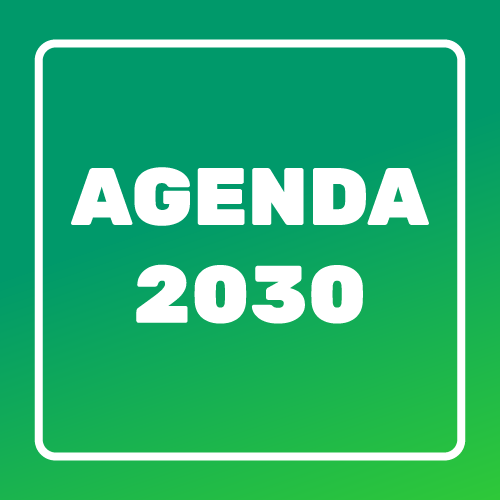Purpose, Climate Change, and Innovation in Organizations
Purpose-oriented organizations were the theme of the Sixteenth International Conference on Climate Change: Impacts and Responses, which took at the École Supérieure de Commerce de Pau, France, in late April. This article is written for us – communicators within the Aberje network – and has many more questions than answers. Good questions are usually the most favorable balance of a good event. I hope they inspire us.
The Sixteenth International Conference on Climate Change was a call to connect and further tighten the connection between companies and organizations that already act driven by impact and purpose and the great theme of our generation: climate change. These days, when we are all mobilized by the climate tragedy in Rio Grande do Sul, reflecting on how our organizations relate to the climate, the topic is even more urgent.
The Conference was a plate full of discoveries for us, professionals of organizational communication. I particularly found it fascinating to learn about the scientific production and the passion that scientists have for solving problems – and thus, I had a super enriching experience.
However, there is a lot to talk about regarding how the theme of climate change reaches organizations and how we, as communicators, can act. For instance, how will we guide our organizations by purpose?
More and more companies are establishing a ‘purpose’ for their activity, a search for results that goes beyond generating value for shareholders and owners.
But how do we make that ‘purpose’ work?
Organizational culture is the core of this transformation. A genuinely purpose-oriented culture:
– Contributes to increasing the long-term value;
– Increases team engagement, achieving more innovation and productivity;
– Strengthens the relationship with customers and consumers, bringing loyalty;
– Connects the company with its context, increasing the perception of meaning and strengthening its reputation.
In addition, it generates more than results; it generates positive impacts and changes in the context that result from its performance and intervention, from its “way of stepping on the planet.”
Notably, it is not enough to announce “we now have a purpose.” It is necessary to build this definition by considering all people. What purpose does it make sense for our organization? What are we talking about? What are the material themes we should address? What can we add to an interconnection system our organization is part of?
Therefore, step one is about sewing meaning, authenticity, and sense. And, to position ourselves, we need our purpose to be genuine, whether experienced by the team of employees or all our stakeholders throughout the value chain we drive. At this time, we must practice strategies that promote a successful integration of “purpose” into our organization. Good practices say that:
– Putting together purpose and performance is to build a beacon;
– Leaders who embody the purpose inspire and build a trusting environment so that all people can engage, orient, and direct;
– Difficult and complex decisions can be purpose-oriented;
– Coherence is another secret of success. We don’t need to plunge into it – I am sure that each of us knows examples of dissonance;
– Strengthening and recognizing people who naturally inspire others is vital. They can contribute a lot to the transformation.
– It is also crucial to provide possibilities for people to connect with purpose and realize how much they contribute to it. Fostering individual learning and maintaining constant and precise communication greatly contributes to this.
Maybe we can already look at all this with some maturity. Large companies are probably already on this transformation journey, but the real change in the economy has just started its first steps. We need to walk.
At this point, you may wonder: “Okay, but what’s new about it?” There is something new.
A new approach to interaction
Thinking about the Conference, we may wonder: How are our companies impacted and caused impact on climate change?
In the face of the climate crisis and sustainability in this necessary transition scenario, companies have been called to act to promote innovations that generate solutions for people and the planet. They should prove that they are not degrading the environmental and social systems on which we depend. Above all, they should build new ways of acting beyond obligations.
There is pressure on companies. How can this subject be put consistently? To build a dialogue would be a good answer.
Is it that easy?
All the above is pleasant and possible to accomplish, but there are disturbing questions.
“What about profit, doesn’t it drop?” is one of them. Management experts answer no to this question. However, redesigning the operation dynamics and thinking with other perspectives is necessary.
I answer the question, “Isn’t promoting well-being a government role?” with another one: “It’s also, but would it be government alone?” Organizations are drivers of innovation in society. We can ingrain ourselves in this role.
But the killing question is: “But what if all of this is just to build an image of a good company?” Speaking is easy, we know. And I’m sure we also know stories that validate this distrust.
This is where we have news: There is a norm that gives references to what actually sets up a purpose-driven organization.
The trend is the air
The British Standards Institution (BSI) – the UK national body responsible for defining technical standards and norms – has published the “PAS 808:2022 Purpose-driven Organizations – Worldviews, Principles, and Behaviors for Delivering Sustainability – Guide’.
This specification is a standard for guiding corporate governance and leadership on what is purpose, how a purpose-oriented organization makes decisions, and how it acts.
The PAS 808 standard indicates worldviews, establishes the fundamental principles of a purpose-oriented organization, and indicates the categories of behaviors associated with these principles and specific behaviors within these categories.
A little context
The BSI is a British national body founded in 1901 to establish norms and technical reference standards. It was instrumental in creating the International Organization for Standardization (ISO) in 1947, which sets international standards today.
The BSI pioneered the development of management system standards and created the world’s first environmental management standard and the world’s first sustainability standard. They have become international standards – and we all have dealt with ISO9000, ISO14001, and many others at some point.
In addition to the British Standards, the BSI produces the so-called PAS, an acronym that designates a Public Available Specification.
PAS are standards built in response to an immediate and specific market need. The BSI guides a rigorous process, which begins with the challenging issue and whose development is sponsored by one or more companies. However, starting from a market need does not mean less rigor. On the contrary, the process is conducted by a technical board group and submitted to an evaluation group composed of experts, professionals of standards committees, government, business associations, and consumers. After that, the suggestions made by the evaluation group are presented to the master group, and the BSI makes a final decision to issue the standard, which is published as a technical reference standard. After two years of publication, a PSA may become a formal British Standard.
So, to wrap things up, here is a pertinent reflection: British standards and norms have referenced international ones. If a PSA regulates purpose-oriented organizations and can become a formal British norm, chances are that a global standard will soon be created that will hit our doors. How about adjusting the steering?
Finally, two questions to reflect on: How is your organization dealing with climate change issues? Does your purpose relate to this topic?
I will soon issue an article about PAS808 and the experience of companies that have already adopted the standard.
Destaques
- Global Alliance’s Latin America Regional Council Kicks Off 2025 with Virtual Meeting
- LiderCom Discusses Communication and DE&I Challenges in the Current U.S. Political Landscape
- Theme of the Year “Communication for Transition” Renewed for 2025
- Web Summit Lisbon 2024: Innovation and Ethics in a Future Shaped by AI
- Global Alliance Launches Recognition Program for Young Communicators
ARTIGOS E COLUNAS
Vânia Bueno Comunicação e Governança: Por que essa relação é mais crítica do que nunca?Carlos Parente A comunicação tem outro papel essencial: a cura da alma!Marcos Santos O brilho é delas!Giovanni Nobile Dias Diálogo e narrativa: o poder do relacionamento duradouro com jornalistasElizeo Karkoski A Importância da Comunicação Interna na Cultura Organizacional parte 2 – níveis de maturidade































